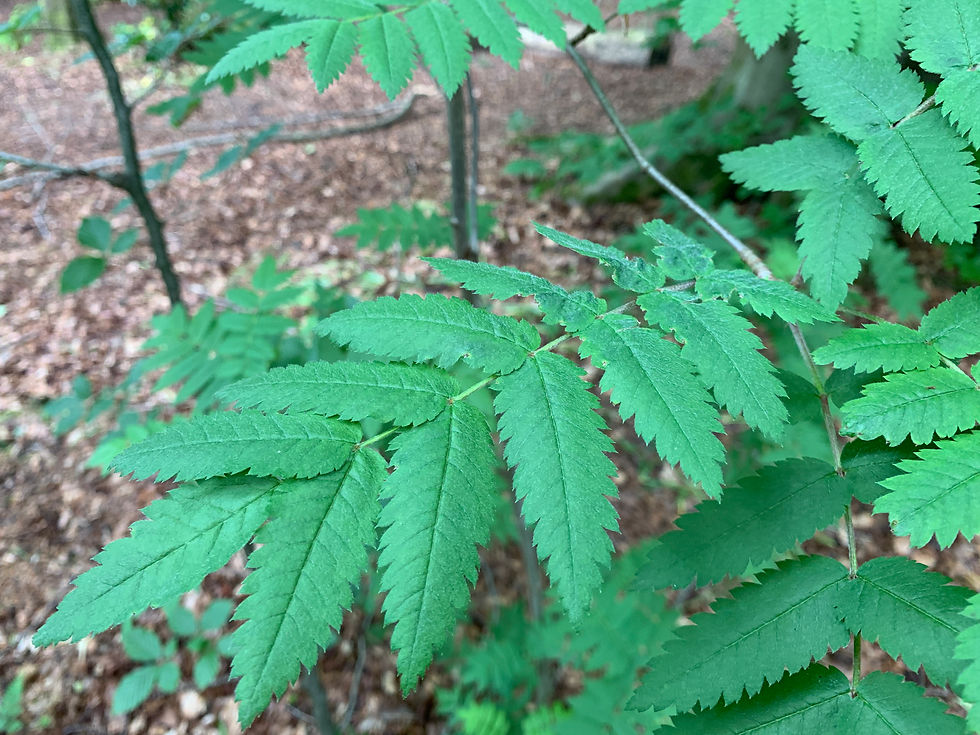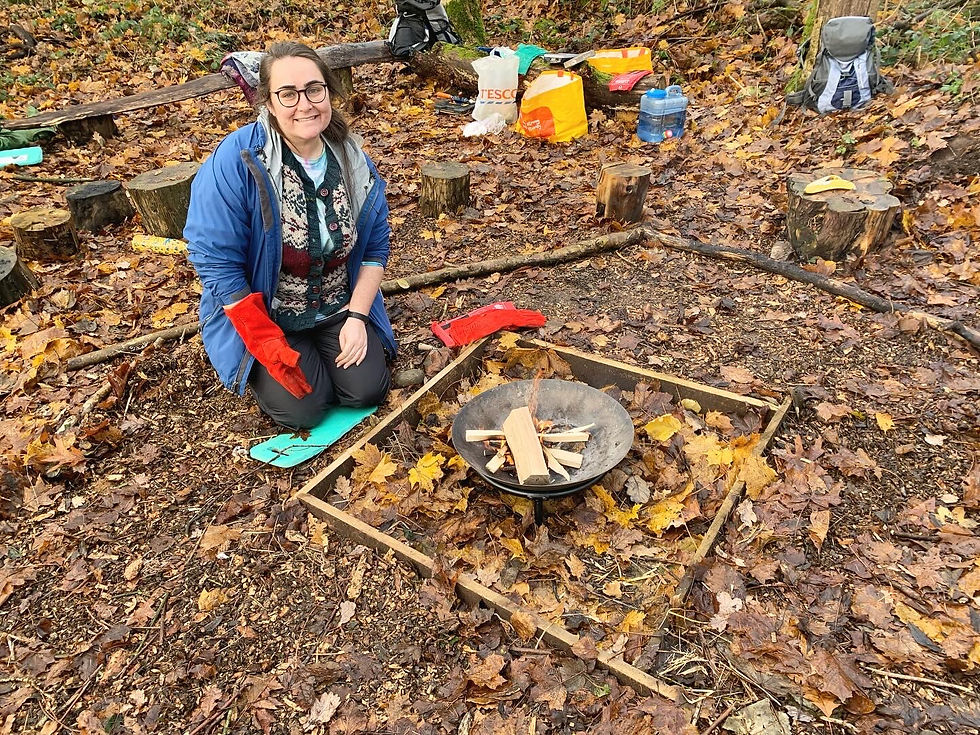All of the Plants
- sydneyrswitzer
- Jun 6, 2024
- 3 min read
I have a small patch of woodland near my house which I've been going to regularly, ever since lockdown began. It's a beautiful space, and feels surprisingly wild for something wedged between a busy road, a council office, houses and a school. I go there often, whether to walk, run, picnic, or just sit and enjoy. It's been a privilege to witness it in different seasons, and over the years. When I think about why I love Glasgow, I think about this woodland, and how much I've gained from spending time with it over the years.

While I didn't run my practice session in these woods, I have run many other sessions in them, and they have also become the place where I learn about different species and their yearly cycles. I went for a walk through the woods in early June, keen to really pay attention to the different species present and see how many I could now identify. It was particularly meaningful, as when I first started going to these woods over four years ago, I doubt if I could have identified any of these species.
We start off with the beautiful rhododendron, which obviously has a bad reputation as an invasive species, but is so beautiful this time of year:

Most of the woodland is made up of three main tree species, beech, lime, and horse chestnut, with a few oaks and sycamores mixed in. The horse chestnut is easy to identify by its large, wide leaves which grow in clusters, almost like a hand. Later in the season it grows large, spiky conkers:

The lime tree is identified by it's large, paper-thin, heart-shaped leaves, with serrated edges. It has a rough trunk, and can also be identified by epicormic growth around the trunk:

Beech leaves are much thicker, slightly hairy around the edges, and with clearly visible lines on the top face. In the winter, they're easy to identify as they turn brown and stick on the trees way longer than other species:

There's the sycamore, which looks like a maple tree but isn't a maple tree:

And of course the oak is easily identifiable by it's classic lobed leaves:

There's one wee willow tree which I always stop by:

And a few random birches as well:

And a few rowans:

In another section of the woodland, there are some large pine trees. They were so large that I wasn't able to get a good look at the needles, but I would identify them as some sort of cypress or cedar tree. They were planted quite close to the old estate house, which gives us the clue that they might be something exotic:

This one was a hemlock, you can tell by the stubby, flat needles which point out in different directions:

The yew tree also has flat needles, but they're longer than the hemlock, and only point out in two directions. It's also quite poisonous:

There was also a wee hawthorne tree hiding in the shade:

And a bit of holly, easy to identify by it's firm leaves which become spiky in response to perceived threat:

Next we'll move on to the medium sized plants, growing from the ground. There were some hogweed shoots, fortunately not giant hogweed, which we can tell because the leaves are more rounded than those of the giant hogweed:

Lots of bracken, especially low to the ground, and in shadier bits:

We have some leftover garlic mustard leaves, a shame because it's one of my favourite plants to snack on while out for a walk:

As well as a few cleavers:

Some wee baby dock leaves:

And loads of clusters of buttercups:

Some beautiful (and thorny) roses:

And what I believe is a dogwood:

Beautiful laurel, I always love the thick, glossy leaves, and the berries are incredible for dyeing:

There were lots of nettles, especially around the pathways:

The rosebay willowherb is one of my absolute favourites, I ferment and dry the leaves to make an incredible tea. I also used the stalks for cordage and the whole plant for dyeing:

Wild raspberries, identified by their relatively tame thorns, and thicker, independent stalks:

As opposed to the bramble, which has a thornier and thinner stem, and less pointy leaves:

And a hanging sedge (sedges have edges):

And then on to the ground cover. There were some tiny daisies spread around:

And a few clovers in the grass:

It's such a wonderful place to pick wild garlic early in the spring, covering the woodland floor with thick green garlic, although at this point in the year, it's dying back:

Lots of ivy, both growing on trees and on the ground, like this one:

Some sort of bracket fungus:


And finishing with a few plants that I didn't manage to ID, because there's always more to learn:




Possibly ground elder, although the leaves in the picture below don't look quite right:


And what I believe is probably enchanter's nightshade:
























Komentáře